
The first carbon-neutral seminar for the communication industry
Photo: DIGITIMES
The seventh annual seminar of the Auden Techno Corp. recently concluded (9/26) at the Hua Nan Bank International Convention Center. In response to the impacts of climate change and the increasingly important topics of energy conservation and carbon reduction in different industries, this year's theme was "Wireless Convergence for Infinite Sustainability." Exploring the idea of "Infinite Sustainability," the goal was to integrate wireless communication through smarter software, more efficient designs, and more open architectures, building networks that are ubiquitous across various domains. This year's seminar notably added the topics of ESG, the net-zero carbon emissions goal, and sustainable development as a whole. This event was the first carbon-neutral seminar in the communications industry. Besides encouraging participants and staff to bring their own water bottles and environmentally friendly utensils to reduce carbon emissions, under the guidance of the new group venture, - Auden Intelligence Carbon Solution Co. Ltd., international carbon rights were purchased to offset the carbon emissions from this event, actively responding to international climate action and putting it into practice.
@ A Collaboration of Industry, Government, Academia, and Research, Covering a Diverse Range of Topics,
The chairman of the Auden Techno Corp., Chang Yupin, mentioned that the group has hosted the seminar for seven years now and expressed his gratitude for the wide-ranging support received. He acknowledged various government agencies such as the National Development Council and the Ministry of Digital Affairs, for their project and financial support, which allowed Auden Techno to continually make strides in forward-looking research. In addition to its new subsidiary, Auden Intelligence Carbon Solution Co. Ltd., which assists companies in achieving global carbon neutrality, another subsidiary, Auray Technology Corp., is one of the major globally recognized ORAN laboratories. It is committed to promoting open communication standards. There were separate sessions in the afternoon discussing topics related to ORAN and information security. Other topics included wireless communication, smart healthcare, energy conservation, and carbon reduction, with the hope of fostering exchanges between all participants.
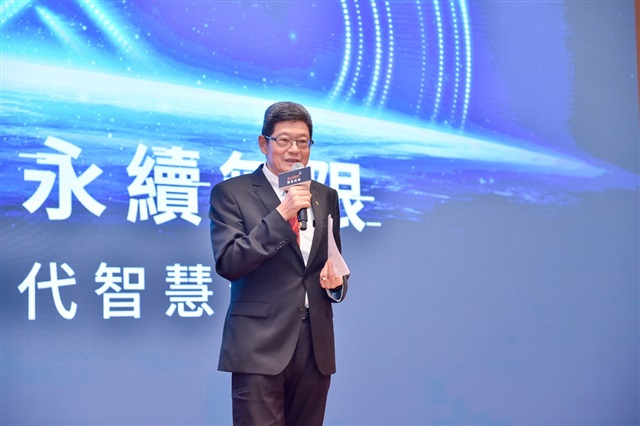
Chairman of the Auden Techno Corp., Chang Yupin
Photo: DIGITIMES
The opening ceremony invited distinguished guests such as Vice Director Hu Peiti from the Administration for Digital Industries of the Ministry of Digital Affairs, Convener Wu Juipei of the Taiwan Electromagnetic Industry-Academia Consortium, Director Chen Weichun from the Space Technology Application Division of the Taiwan Space Agency, and Vice Director Chen Chiunghua from the Industrial Development Division of the National Development Council. Vice Director Hu Peiti stated that the government announced last year that a dedicated 5G network would be launched this year. After joint efforts by industry, government, academia, and research institutions, it has finally been implemented and has been done so with more flexible pricing. This year, 20 companies have applied for the 5G dedicated network. For example, Taipei Mackay Memorial Hospital has realized telemedicine through the 5G dedicated network, allowing doctors to more easily grasp patients' heart or abdominal conditions and provide medical services. Ms. Hu expressed hope that advances in communications can bring changes to human life. Director Chen Weichun discussed how Auden Techno has continuously made technological breakthroughs in the field of low-orbit satellites and is a member of the Taiwan Space Industry Development Association and the Low Earth Orbit Satellite Alliance. He anticipates that Auden will lead the industry and play an important role in the process from millimeter-wave antenna technology to comprehensive Low Earth Orbit Satellite development. Convener Wu Juipei pointed out that climate change has begun to attract the attention of the electronics and electrical industries. It has also led to the cultivation of related talents and planning for how enterprises should respond to future technical blueprints. At this year's Auden Techno seminar, it was evident that these related issues could not be ignored. As people look forward to technological developments, it's expected that carbon reduction actions will be implemented.
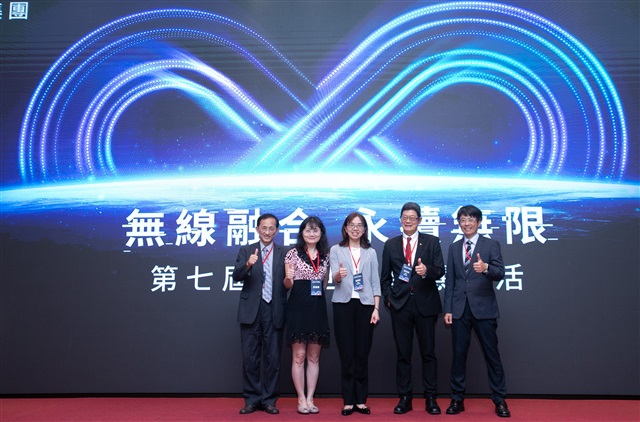
From left to right in order are Convener Wu Juipei, Vice Director Chen Chiunghua, Vice Director Hu Peiti, Chairman Zhang Yubin, and Director Chen Weichun of the Taiwan Space Agency.
Photo: DIGITIMES
@ Regulations Regarding High-Frequency Wireless Power Absorption in the Human Body Catch the Attention of Regulatory Agencies Worldwide
The morning keynote speech was chaired by Professor Wu Tsunglin from the National Taiwan University. It brought together professionals from industry, academia, and research institutions to share significant technical developments and market trends. The first session was delivered by Dr. Niels Kuster, a professor from the IT'IS Foundation and the Swiss Federal Institute of Technology Zurich. His talk, "Methods and Procedures to Determine the Absorbed Power Density," focused on the issue of bodily absorption of wireless radio frequency power. Dr. Niels Kuster stated that there is still no definitive conclusion on the regulations for the absorption power density of wireless radio frequencies in humans continuing into the development to 6G from 5G. However, regulatory bodies worldwide have already begun launching related testing plans to prevent unnecessary harm to the human body. At this stage, frequency bands below 10GHz have been regulated, which is particularly important for the soon-to-be-widespread Wi-Fi 7 technology.
However, as we enter the realm above 10GHz, more discussions are necessary. Many standard-setting organizations have also started drafting regulations with concrete results expected in 2 to 3 years. Currently, the IT'IS Foundation has made progress in this area. Dr. Kuster shared several different methods for measuring absorption power density such as the scanning system, which is expected to offer commercial solutions to meet market demands by the end of this year.
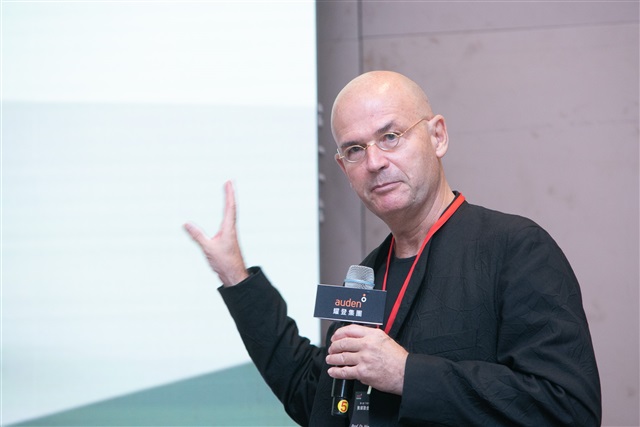
Director, IT'IS Foundation & ETH Zurich /Prof. Dr. Niels Kuster
Photo: DIGITIMES
@Metamaterials Contribute to Enhanced Performance in Space Antenna Design
Following that, Dr. Erik Lier from Lockheed Martin Corporation shared his insights on "Practical new antenna designs based on metamaterials." Lockheed Martin, with 100,000 employees worldwide, covers a range of businesses including aviation, missile and fire control systems, aircraft manufacturing, etc. Given that most operating GPS satellites are manufactured by the Company, its significance in the aerospace industry is evident.
Dr. Erik Lier is dedicated to technical developments in the space sector, discussing the development of Metamaterials in various application areas, as well as sharing the current status of antenna system developments such as Short Backfire Antennas (SBFA) and High Gain Low-Index Metalens Antennas. The development of Short Backfire Antennas has been ongoing for over sixty years, and they can be seen in use by NASA, on ships, and even on the New York TV tower. However, despite the impressive performance of these antennas, Dr. Lier pointed out that SBFAs have a relatively low aperture efficiency. To enhance antenna performance, they tried to increase the quality of the antennas, which led to an increase in the antenna mass - a challenge not easily overcome in the space domain. This issue led to the exploration of whether metamaterials could provide a solution. The results demonstrated that indeed, metamaterials could resolve the aforementioned problem.
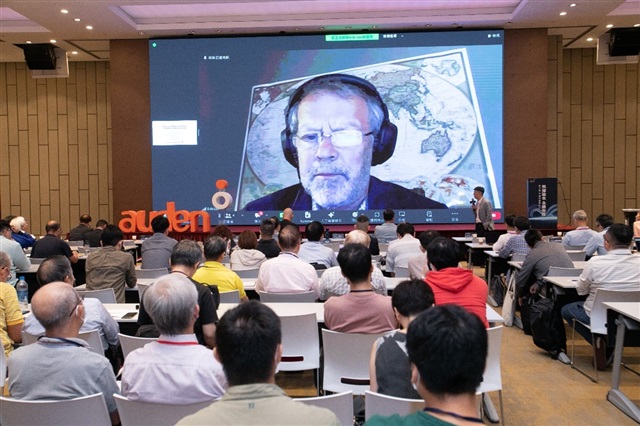
Senior Technical Fellow, Lockheed Martin Space Life Fellow, IEEE and IEEE DL /Dr. Erik Lier
Photo: DIGITIMES
@ Net Zero Carbon Emissions Has Become a Consensus and Target Among Taiwan's Industry and Government
Echoing the theme of sustainability, Dr. Lo Shihfang from the Chung-Hua Institution for Economic Research discussed "Corporate Net Zero Carbon Emission Pathways and Internal Carbon Pricing." She mentioned that internationally, the goal is to achieve net zero carbon emissions and natural gas usage by 2050, with plans being made to progressively approach this target. However, the practical means of achieving these standards are areas that need discussion. Initially, Taiwanese businesses were relatively passive regarding the topic of net zero carbon emissions. It was not until TSMC joined RE100 that the attitude changed to be more positive. TSMC has also announced that it will accelerate its progress towards the RE100 sustainability goal and achieve it by 2040, hoping to exert its influence and motivate Taiwanese enterprises to practice environmental sustainability goals. The Taiwanese government also has corresponding plans for the net zero targets. Dr. Lo Shihfang quoted content previously released by Kung Minghsin, Chairman of the National Development Council, stating that the Council has planned related budgets up to 2050. In other words, this is the largest budget plan from the public sector so far.
Furthermore, Dr. Lo talked about twin transformation, which represents the sweet spot between digital transformation and sustainability transformation. How can enterprises find this balance? She cited data from the World Economic Forum indicating that if businesses introduce digital technology, they can achieve a 20% reduction in carbon dioxide emissions. Taking Qisda Corporation as an example, the Company claims that "one hour after a product officially enters mass production, a carbon footprint report can be presented." Dr. Lo believes this is not easy in practice, and the cooperation with numerous suppliers aside from their own factories will also be a significant challenge. She, however, recognized their efforts towards carbon reduction.
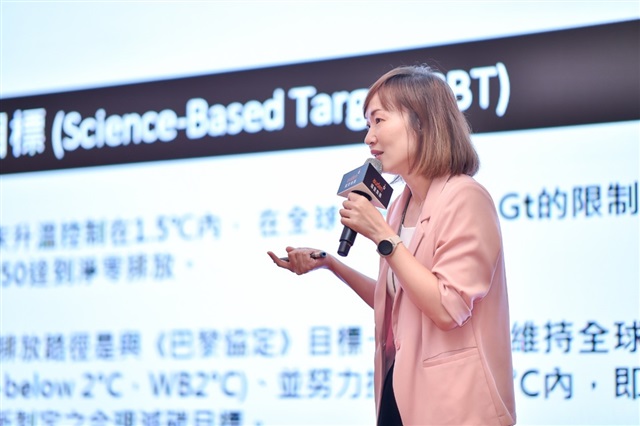
Dr. Lo Shihfang, Researcher at Chung-Hua Institution for Economic Research
Photo: DIGITIMES
@ ITRI's Information and Communications Research Laboratories Empowers Domestic Sustainable Living Development through Technical R&D
The keynote speech by Dr. Ting Pangan, director of the Information and Communications Research Laboratories of the Industrial Technology Research Institute (ITRI), was titled "A Discussion on Communication Network Ecosystems Supporting Greening, Intelligentization, and Openness." He mentioned that from the perspective of the Information and Communications Research Laboratories, the vision for 2035 revolves around four major axes: smart living, healthy lifestyle, sustainable environment, and resilient society. The sustainable environment can be further subdivided into three sub-items: decarbonized energy, low-carbon life, and resource circulation. Based on the current technical and application scope covered by the department, they will assist in the successful development of the aforementioned four major axes through smart networking, green sustainability, intelligent empowerment, and innovation.
From the perspective of green sustainability, the department also has many technological advancements that assist in putting the application scenarios into practice. For example, in data center applications, that have been increasingly popular in recent years, immersion cooling technology can reduce space and energy consumption by 40% compared to traditional air-cooling technology. The Department provides system software for immersive technology, which can support all server products available on the market.
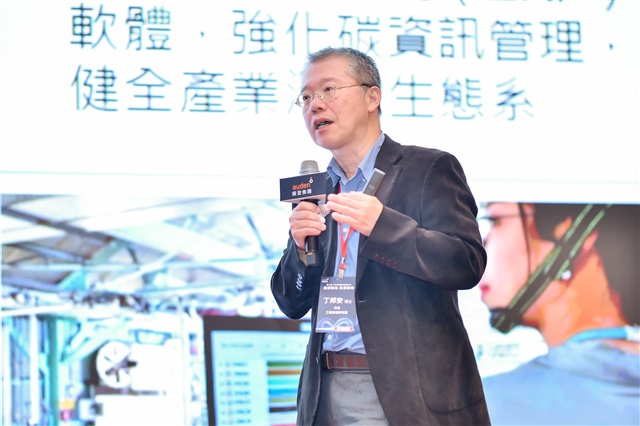
Dr. Ting Pangan, Director of the Industrial Technology Research Institute
Photo: DIGITIMES
@ ORAN's focus on RIC technology aids diverse application scenarios
ORAN has always played a crucial role in discussions related to 5G technology and applications. Auray Technology Corp. was the first OTIC third-party impartial laboratory globally recognized by the international O-RAN. Dr. Jinsung Choi, the chairman of the ORAN Alliance, was specially invited to share "AI-Driven Open RAN: Reimagining Wireless Networks" at this seminar.
Dr. Jinsung Choi not only reiterated the basic principles of ORAN, such as openness and compliance but also considered AI to be an important technical criterion in its development. He gave examples such as the RAN Intelligent Controller (RIC), management systems based on AI and machine learning, and automated deployments to enhance operational efficiency, etc. He further introduced the features of RIC. Conceptually, RIC can be divided into two types. One is for near real-time responses, and the other is primarily non-real-time responses. There is only a one-second time tolerance difference between the two. However, these two different RICs can flexibly respond to various application scenarios due to this time difference.
According to the data quoted by Dr. Jinsung Choi from research reports, the majority of manufacturers believe that RIC is crucial in network deployment and plays a very important role in the field of ORAN. He further extended the discussion related to RIC, comparing it with SON (Self-Organizing Network) and IBN (Intent-Based Networking). Each of these three technologies has its pros and cons, but they all aim to optimize the performance and cost of 5G networks to a considerable extent and achieve automation. In other words, these three technologies can complement each other to meet the increasing network demands of the future.
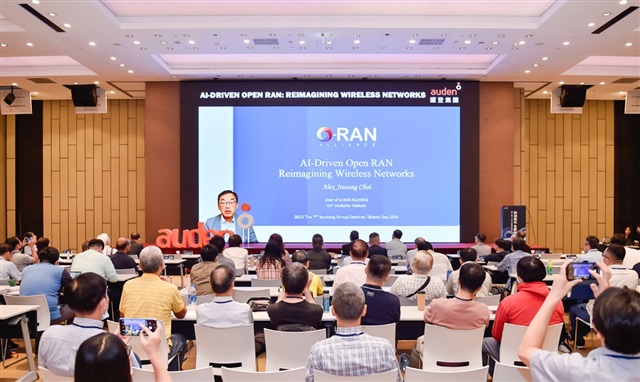
Chairman, O-RAN ALLIANCE /Dr. Jinsung Choi
Photo: DIGITIMES
@ The Afternoon Session Brings Together Professionals From the Industry, Government, Academia, and Research Institutions, Combining Forward-thinking And Practical Concepts
In the afternoon session, professionals from industry, academia, government, and research institutions gathered to present forward-looking and practical concepts. The agenda broadly covered fields like the integration of communication technologies, construction of B5G/6G ecosystems, biomedical electronics development under precision medicine, ORAN and network information security verification technology, and regulations for green energy and carbon reduction.
Track A, titled "Unified World: Full Network Integration" focused on B5G and 6G technical developments. Chaired by Associate Professor Chung Mingan from the National Taipei University of Technology, the session included talks held by the Auden Group's Senior Director Tuan Chunchung and Senior Manager Hsu Yuchun on the design challenges of multi-orbit satellite UT. Professor Hu Chengnan of the Asia Eastern University of Science and Technology, CEO Dr. Chou Hsienkuang of the Ship And Ocean Industries R&D Center, and CEO Dr. Chu Chihyuan of Ohmplus Technology Inc. were also invited to share their experiences and observations.
Track B, "AI Simulation: Smart Medicine," was chaired by Dr. Tsai Chengen, Vice General Manager of OBI Pharma, Inc. This panel invited Dr. Taylor Newton from IT'IS Foundation to discuss personalized bioelectromagnetic modeling in precision medicine. Dr. Kuo Liwei from the National Health Research Institutes, Professor Yang Chihchieh from the National Yang Ming Chiao Tung University, and Professor Li Polei from the National Central University also shared their research outcome and contributions.
Track C, "Deconstructing Telecommunications: Secure Openness," which targeted ORAN and cybersecurity issues, was hosted by Professor Cheng Juikuang of National Taiwan University of Science and Technology. Invited speakers included Vice Group Leader Chiu Pichen from the ITRI, Director Tsai Chengyu from the Institute for Information Industry, Kuo Tsolin from Telecom Technology Center, and Project Manager Lin Tsungyi from Auray Technology Corp.
In response to industry trends and this year's theme, a new track was added: Track D, "Enterprise Sustainability: Zero Carbon." It covered international and Taiwanese sustainable development trends and corporate strategies. The session was chaired by Yang Chihchien, the project host from the National Renewable Energy Certification Center. Invited speakers included Group Leader Huang Chihwen from the Bureau of Standards, Metrology and Inspection, Assistant researcher Feng Kuanchuan from Taiwan Institute of Economic Research, Distinguished Professor Wang Lichih from Tunghai University, and Manager Chiu Tsungyung from Auray Technology Corp.
The Auden Group has been deeply involved in the communication field for many years, accumulating rich resources in industry, government, academia, and research institutions. In addition to continuous technological innovation to improve quality of life, it also addresses global net zero carbon emission issues, takes on corporate sustainability responsibility, strives toward global carbon neutrality with practical actions, and offers a unique perspective in the communication industry. Looking forward to the future, the Auden Group seminar will bring more imagination to the next generation of smart life through the integration of diverse industry topics, collectively marching towards the goal of net zero emissions!
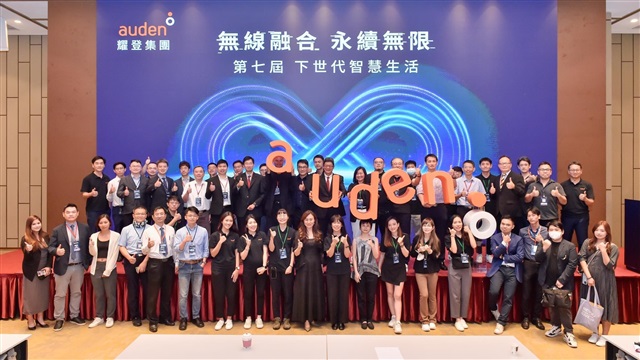
The seventh Auden Group seminar concluded recently at the Hua Nan Bank International Convention Center
Photo: DIGITIMES



